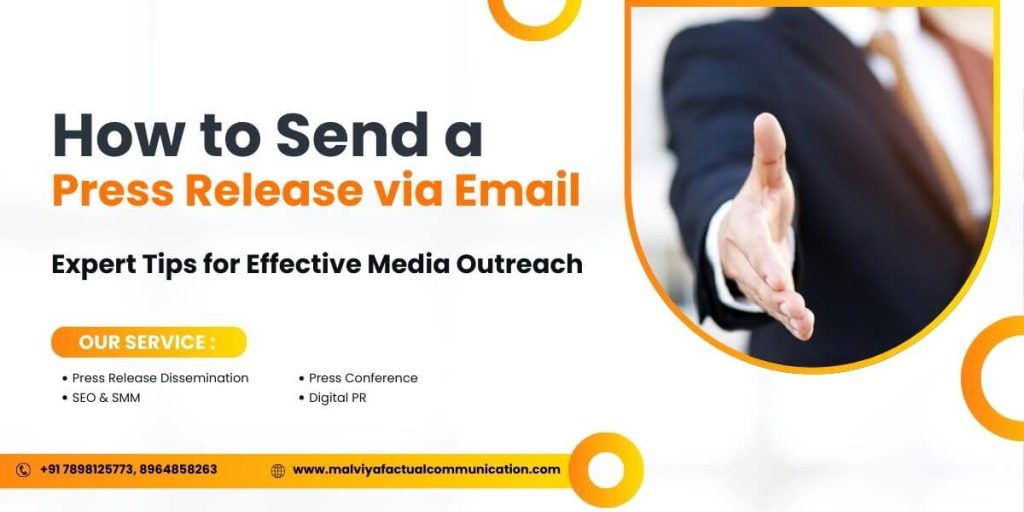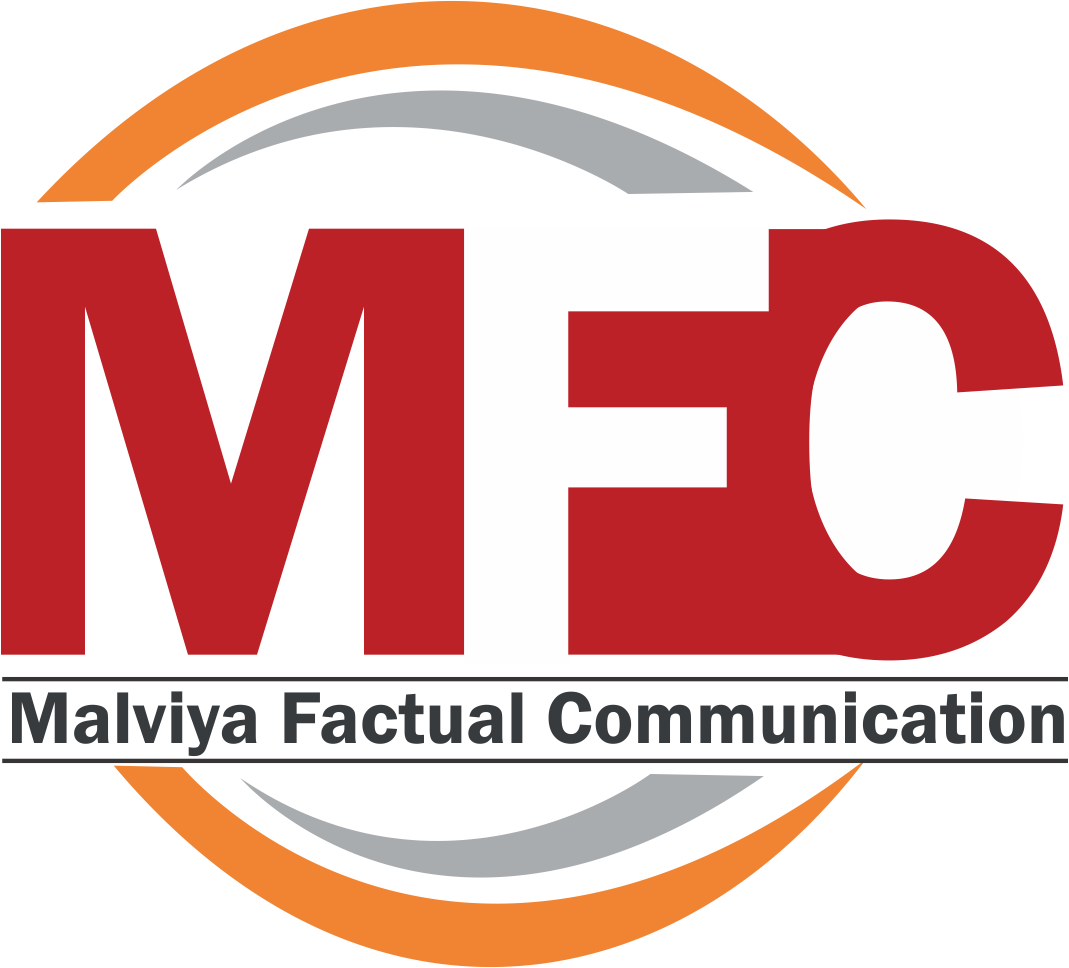
Sending a press release via email is one of the most effective methods of press release dissemination, allowing you to communicate important updates, announcements, or news directly to journalists, media outlets, and industry professionals. With just one click, you can reach a wide audience and increase your chances of gaining media coverage. However, since journalists receive countless emails daily, ensuring your press release stands out is crucial. A well-crafted, clear, and engaging email can make all the difference in capturing their attention and securing valuable coverage.
In this guide, we’ll walk you through the process of sending a press release via email, offering practical tips to improve your chances of success. We’ll cover essential elements such as writing a compelling subject line, structuring the email body, and attaching or embedding the press release in a way that’s easy for journalists to access. Additionally, we’ll provide a sample email format and expert advice on tailoring your message to reach the right audience. By following these tips and best practices, you can effectively distribute your press release and increase its chances of media coverage, helping to boost your brand’s visibility and reach.
Understanding Press Releases via Email: Purpose, Process, and Best Practices
A press release via email is a method of distributing formal announcements, news releases, or updates to journalists, media outlets, and relevant stakeholders. It involves sending the press release content directly in the email body or as an attachment, making it accessible and easy to review.
Purpose:
The main goal of sending a press release via email is to capture the attention of reporters or editors by providing concise, relevant, and newsworthy information. A well-crafted press release can inform journalists of significant news, product launches, events, or updates, encouraging them to cover the story for their audience.
Process and Best Practices:
- Create a Compelling Subject Line: The subject line is the first thing a journalist sees, so make it concise, specific, and engaging. Aim to summarize the main news angle in 6-8 words that communicate urgency or significance.
- Personalize the Email Introduction: Where possible, address the journalist by name and acknowledge their past work if relevant. Personalization shows you’ve done your research and helps establish a connection.
- Summarize Key Points in the Email Body: Start the email with a brief introduction or summary that conveys the main message of the press release. This should be a few lines that capture the essence of your announcement.
- Attach or Embed the Press Release: Include the full press release either as an attachment (in PDF or Word format) or paste it directly into the email body for easy access. If attaching, make sure the file size is manageable to avoid issues with inbox filters.
- Include Relevant Links: If possible, add links to supporting information, such as your website, high-resolution images, or related resources. Avoid overwhelming the recipient with too many links; choose those that enhance the press release.
- Provide Contact Information: Make sure to include your contact details (name, phone number, and email address) so journalists can easily reach you for additional information or interviews.
- Follow Up Professionally: After a few days, send a polite follow-up email if you haven’t received a response. Keep it brief, reiterate your main message, and offer to provide more information if needed.
Why Sending a Press Release via Email Matters for Media Outreach
Sending a press release via email is one of the most effective and professional ways to reach journalists and media outlets. It allows for direct communication, ensuring your news reaches the right people in a timely manner. Email is preferred by journalists because it provides an efficient, organized way to review and access information. By sending press releases through email, you can target specific reporters, personalize the message, and include all necessary details, such as media contacts, attachments, and links. This approach enhances the chances of your press release being noticed, considered for coverage, and ultimately shared with a broader audience.
Example of a Well-Written Email for Sending a Press Release
Subject: Exciting Product Launch: [Product Name] – Press Release Attached
Dear [Journalist’s Name],
I hope this email finds you well. I’m reaching out to share an exciting announcement from [Your Company Name]. We are thrilled to launch [Product Name], a groundbreaking product designed to [briefly describe what the product does and its key features].
Please find the full press release attached for more detailed information. We believe that your audience would be interested in hearing about this innovative new product, and we’d love to provide any additional information or arrange an interview with [Company Spokesperson/CEO Name].
If you have any questions or need further details, feel free to contact me directly. We look forward to your feedback and hope this news is of interest to you.
Thank you for your time and consideration.
Best regards,
[Your Name]
[Your Position]
[Your Company Name]
[Phone Number]
[Email Address]
Common Mistakes to Avoid When Sending a Press Release via Email
When sending a press release via email, it’s crucial to avoid common mistakes that can reduce the chances of your release being noticed or covered. Here are a few key mistakes to watch out for:
- Weak Subject Lines: A vague or generic subject line can cause your email to be ignored. Be sure to craft a compelling subject line that highlights the main news or announcement in your press release.
- Overloading with Information: Avoid sending a long-winded email. Journalists often skim emails, so keep the introduction brief and to the point. Provide the full press release as an attachment or below the email for detailed information.
- Lack of Personalization: Sending a generic email to a mass list of journalists without personalizing it can make your email seem impersonal. Tailor your email to each recipient and their specific interests.
- Poor Formatting: Sending a press release without proper structure or in an unreadable format can cause confusion. Ensure the email and attachment are well-organized and easy to navigate.
- Failure to Follow Up: Don’t just send an email and forget about it. Follow up politely after a few days if you haven’t received a response, as journalists often overlook emails due to their busy schedules.
By avoiding these mistakes, you improve the chances of your press release being noticed and picked up by journalists, helping to enhance your media outreach efforts.
Why a Professional PR Approach is Essential for Successful Media Outreach
Effectively reaching journalists and securing media coverage requires more than just sending a press release. One of the biggest challenges in media outreach is identifying the right journalists who cover your specific industry and understanding their beats. Journalists typically focus on particular areas or topics, and reaching out to the wrong person can lead to your press release being overlooked.
Knowing who to contact is only part of the equation. Once you’ve identified the right journalists, the next step is crafting a tailored message that aligns with their interests. Each journalist has a unique style and preferences when it comes to the stories they cover. A one-size-fits-all approach rarely works. By understanding a journalist’s past coverage and anticipating what they might find interesting, you can increase the chances that your press release will resonate with them.
This process can be overwhelming for many businesses, which is why many turn to PR agencies that specialize in media outreach. These agencies have extensive knowledge of the media landscape, including understanding which journalists cover what industries and how to approach them effectively. With their expertise, they help businesses craft targeted pitches that capture the attention of the right journalists and increase the chances of media coverage.
If you’re looking for guidance in navigating the media outreach process, consider consulting with experienced professionals who can assist in fine-tuning your approach. Agencies with a strong understanding of media relationships, like Malviya Factual Communication, specialize in creating customized strategies to connect businesses with the right journalists, ensuring your message is heard by those who matter most. For expert advice or a consultation, feel free to reach out via email at contactmfc0206@gmail.com or call +91 7898125773, 8964858263. With the right expertise, businesses can improve their media outreach strategy and enhance their chances of securing meaningful media coverage.
Press Release Dissemination Tips for Maximum Impact
When it comes to successfully disseminating a press release, it’s not just about sending it out; it’s about ensuring your message reaches the right audience in the most effective way. Here are some key tips for press release dissemination:
- Segment Your Media List: Before sending out your press release, ensure you have a well-targeted media list. This means identifying journalists who cover the specific industry or topic you’re announcing. A personalized, targeted email will be far more effective than a blanket message sent to a broad list.
- Timing is Key: Timing plays an essential role in the success of your press release. Release your press release at a time when your target journalists are most likely to notice it. Avoid sending it on weekends or holidays, as journalists might not be working, and your email could get buried in their inbox.
- Use a Professional Distribution Service: Using a reliable press release distribution service can help expand your reach. Professional PR agencies, like Malviya Factual Communication, can assist in ensuring that your press release is distributed to the right journalists, publications, and other key media contacts, increasing the likelihood of coverage.
- Follow Up: After sending your press release, don’t just wait. A polite follow-up email can remind journalists of your press release, increasing its chances of being read and potentially covered.
- Track Results: Utilize tracking tools to monitor the performance of your press release.
Conclusion:
Sending a press release via email is one of the most effective and efficient ways to get your news in front of the right audience. However, the real success lies in more than just distributing a press release—it’s about how you distribute it. By paying attention to key details like crafting an eye-catching subject line, personalizing the message for the journalist, and ensuring your press release is easily accessible, you can significantly increase your chances of getting noticed.
Additionally, understanding the media landscape and targeting the right journalists who cover your specific industry can make all the difference in securing valuable coverage. If managing these tasks feels overwhelming, working with a professional PR agency like Malviya Factual Communication can help streamline the process and ensure your message reaches the right people effectively. For brands looking to improve their media outreach strategy and boost their visibility, a carefully crafted press release, combined with a thoughtful distribution approach, can open doors to increased media coverage, enhanced brand reputation, and stronger industry connections.


